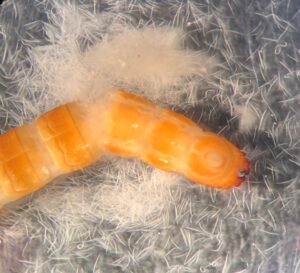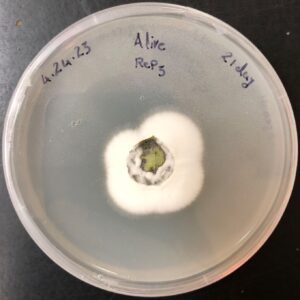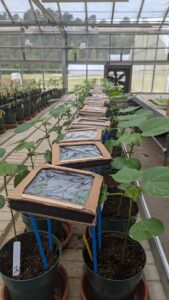
Conserving and/or introducing natural enemies in agroecosystems have been used as a way, often in integration with other control tactics, to manage pests.
Local Entomopathogens in Pest Management:
In addition to the efficacy evaluation of commercially available entomopathogens in organic production systems, we are examining the effectiveness of local entomopathogens by rearing them in the laboratory and reintroducing them into the agroecosystem; the naturally occurring entomopathogens, likely adapted to the local habitat and endemic hosts, can be efficacious against the pest population.

Endophytes in Pest Management:
Some entomopathogenic organisms can establish endophytic relationships with the host plant. There, the host plant is expected to provide the endophyte/entomopathgen with protection against abiotic factors that are detrimental to its persistence in the environment. The plant can also benefit from relatively longer-term protection due to the upregulation of its defensive pathways in response to the colonization by the endophytic entomopathogens. In one of our ongoing projects, we are set to address several questions in this developing area of research and evaluate its feasibility as an effective management practice in the field.

Co-Applications of Entomopathgens in Subterranean Pest Management:
As we continue to investigate the efficacy of single applications of either entomopathogenic fungi or nematodes against subterranean pests (i.e., wireworms; Col.: Elateridae) with respect to soil characteristics, we examine ways to improve the management efficacy through co-applications of these natural enemies. The effectiveness of co-applications can be affected by the isolate/strain of the pathogen, the timing of application, and a variety of biotic and abiotic environmental variables.